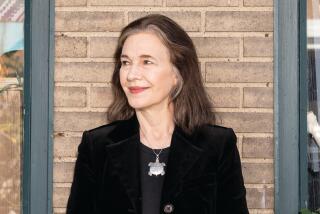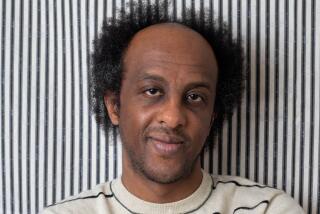A Troubled Teen Discovers Family Roots and His Way
- Share via
Permanent Connections by Sue Ellen Bridgers (Harper & Row Jr.: $13.95 hardcover; 264 pages)
In one of the author’s earlier young adult novels, a character asks her suicidal brother whether he knew that the damage his mother had done to him was nothing compared to the damage he could do to himself. It is a question parents ask each other, and a question that they hope their children will ask, too.
In Sue Ellen Bridgers’ fifth novel, “Permanent Connections,” it is Rob Dickson, 17, who nearly damages his life permanently. Rob, hostile to friends and family and dependent on drugs and alcohol, is forced by his father to stay in North Carolina to care for his Uncle Fairlee, who has broken his hip.
“You can bungle it here,” Rob’s dad says, “or you can do a good thing.”
And so Rob is trapped with his uncle, his autocratic grandfather and agoraphobic Aunt Coralee in his grandfather’s farmhouse, which “smells of bacon grease and labor.” Rob doesn’t have the courage to run away.
Bewildered Teen
This is the stuff of today’s successful young adult novels: an already bewildered teen-ager manipulated into a new situation over which he has even less control than his present life. Bridgers, with an ear for the authentic talk of teen-agers and a heart for the way they feel, does this very well, as is demonstrated by the selection of four of her earlier novels as American Library Assn. “Best Books for Young Adults.”
With spare, economical prose, Bridgers describes the Appalachian Mountains where Rob jogs to keep his sanity: the gray, distant hills in the rain, mossy damp smells and “a narrow patch of sunlight that eked through the mist.”
When Rob meets Ellery, she, like the sunlight, becomes his ray of hope, his support for getting through the next semester. Ellery and her mother, Ginny, a weaver, have come to Appalachia to build a new life after Ginny’s divorce. Ellery also is an outsider in the little “racist redneck town.” But there is a difference.
“He’s got relatives here,” Ellery says. “He can act like them when he wants to.” Whereas Rob seems to be drifting into despair, Ellery is dedicated to her studies and her music.
The Conversion
After Rob and Ellery make love, Rob thinks he can stand playing nursemaid if he has Ellery to love. But he needs more than she can give. They argue and Rob turns to pot and whiskey for escape. After a ruinous episode with drugs and a life-or-death accident with his grandfather, Rob finds himself in a small isolated church. A minister leads him to prayer. But, in a departure from Bridgers’ deft plotting style, the minister seems to have been cranked across the stage in an old deus ex machina contrivance, and Rob’s real conversion is less sweet because of it.
Still, Rob knows for the “first time in his life where he is going.” He understands that his extended family loves him for the simple reason that he is kin. He begins to see their connection to him.
Ginny, one of Bridgers’ capable female characters, is a stronger feminist than some in Bridgers’ earlier books. When she helps Coralee overcome her agoraphobia, she says, “Lately I’ve been trying to take care of myself. That’s what women are most afraid of, you know. Being selfish.”
Ginny and Coralee’s struggles parallel the struggles that Rob and Ellery have with despair and selfishness. If Bridgers’ intent was to write about permanent connections between people, in and out of the traditional family unit, she has succeeded.
Going Home
Bridgers’ story is about going home again and finding roots, the theme of current young adult literature, especially the so-called “Appal-Lit.” Perhaps because of her life in one of those small Appalachian towns where family and friends seem to matter, she has tapped into a phenomenon in American life.
Through her perceptive writing Bridgers wants, it seems, to help teen-agers love themselves. Ginny says it best, “The (weaving) formed before here . . . too small to show . . . the pattern. Not being able to view the product until it was finished (was hard). There was no changing it. You had to live with what you’d made. It is the same with children.”
More to Read
Sign up for our Book Club newsletter
Get the latest news, events and more from the Los Angeles Times Book Club, and help us get L.A. reading and talking.
You may occasionally receive promotional content from the Los Angeles Times.







